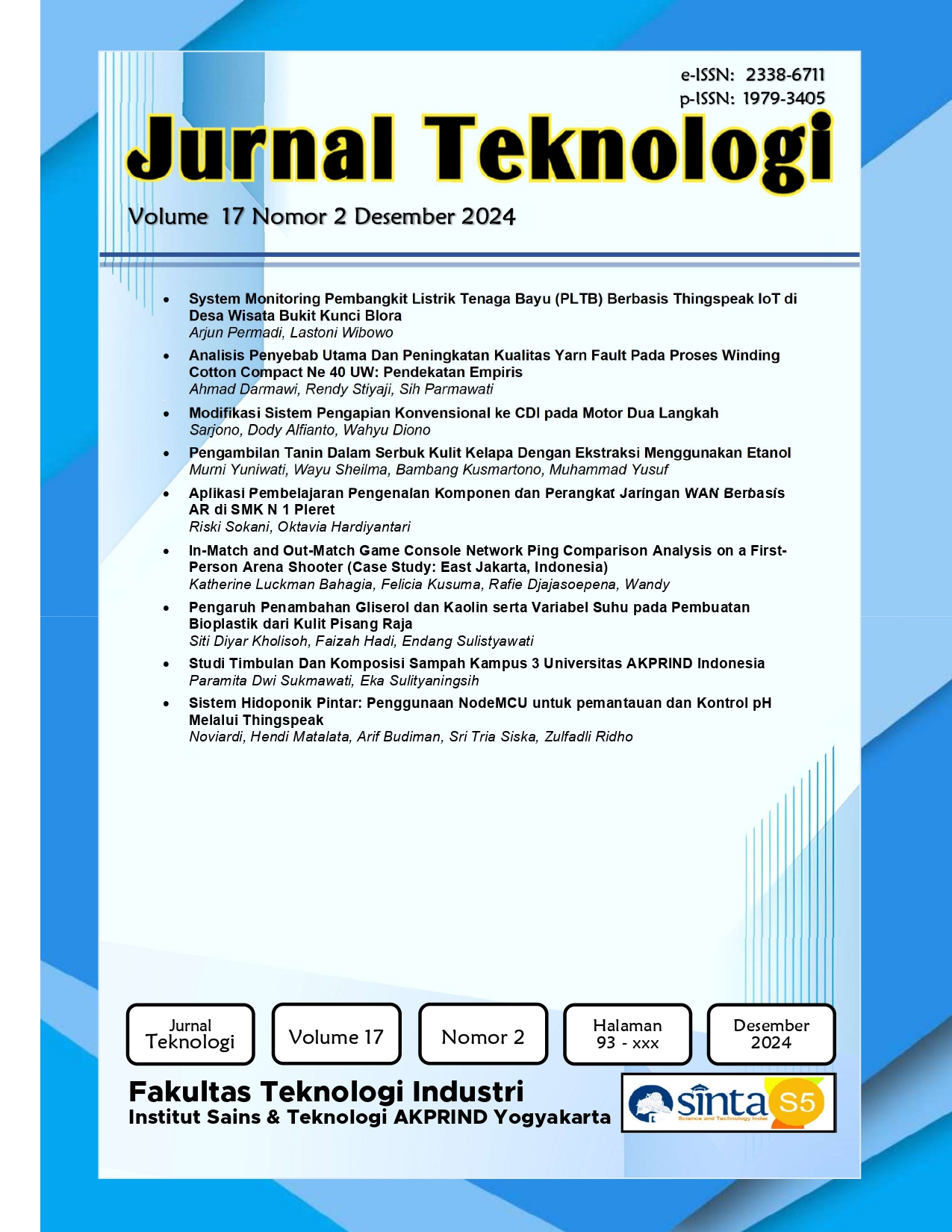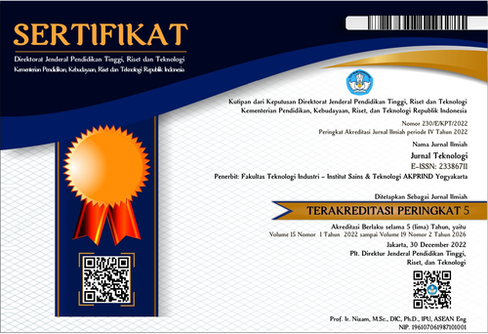Pengambilan Tanin dalam Serbuk Kulit Kelapa dengan Ekstraksi Menggunakan Etanol
DOI:
https://doi.org/10.34151/jurtek.v17i2.4409Keywords:
cocopeat, ethanol, extractionAbstract
Coconut shell powder can be used as a planting medium called cocopeat. Cocopeat has several advantages, namely being able to bind and store water optimally, and containing essential nutritional elements that plants need. Behind the many advantages of cocopeat, there are also disadvantages of cocopeat, namely the tannin content which inhibits the absorption of nutrients into plants. However, if tannin can be separated from other ingredients, it can be used, for example in the health sector as a producer of anti-oxidants which can capture free radicals in the body. Apart from that, tannins are often used for industrial purposes, including as a leather tanner, as an adhesive, as a dye and so on. This tannin extraction aims to improve the quality of cocopeat so that it does not hinder the absorption of nutrients in cocopeat into plant roots, and to obtain tannin which is much needed for industrial purposes. In this research, tannins from coconut shell powder were extracted using ethanol. Optimal conditions to obtain maximum tannin extract are carried out at a solution boiling temperature of 78oC cm, stirring speed of 300 rpm, ratio of solvent volume to material mass of 10 mL/g, and a process time of 3 hours. Under these conditions, it is able to extract 87% of the tannins in coconut shell powder.
Downloads
References
Ayu, D.P., Puti, E.R.P., Izza, P.R., dan Nurkhamamah, Z. 2021. Pengolahan limbah serabut kelapa menjadi media tanam cocopeat dan cocofiber di Dusun Pepen. Jurnal Praktis dan Dedikasi. 4(2): 93-100.
Das, A.K., Islam, Md.N., Faruk, Md.O., Ahaduzzam, Md., & Dungani, R. 2020. Review on tannins: extraction processes, applications and possibilities. South African Journal of Botany, 135:58–70. https://doi: 10.1016/j.sajb.2020.08.008
Hafizah, N., Adriani, F., & Luthfi, M. (2019). Pengaruh Berbagai Komposisi Media Tanam Hidroponik Sistem DFT pada Pertumbuhan dan Hasil Tanaman Selada (Lactuca sativa L.). Rawa Sains: Jurnal Sains STIPER Amuntai, 9(2), 62-67.
Karina, Indrayani, Y., Sirait, SM. (2016). Kadar Tanin Biji Pinang (Areca Catechu L) Berdasarkan Lama Pemanasan dan Ukuran Serbuk. Jurnal Hutan Lestari. 4(1):119-127.
Lumbangaol, N. 2020. Penentuan Kadar Tanin Total Ekstrak Etanol Buah Marasi (Curculigo latifolia) Dengan Metode Spektroscopy UV-Visible. Herbal Medicine Journal. 2020;3:19–23.
Nurdin, SQ. (2017). Mempercepat Panen Sayuran Hidroponik. PT Agromedia Pustaka. Jakarta.
Ramadhan, D., Riniarti dan Santoso, T. (2018). Pemanfaatan cocopeat sebagai media tumbuh sangon laut (Paraserianthes falcataria) dan merbau darat (Intsia palembanica). Jurnal Sylva Lestari. 6(2): 22 – 31.
Sepriyanto dan Subama. (2018). Pengaruh lama perendalam sabut kelapa terhadap hasil cocofiber dan cocopeat buah kelapa dari Daerah Jambi. Jurnal Inovator. 1(2): 22 – 25.
Sukmaya, S.G. (2017). Analisis Permintaan Minyak Kelapa (Coconut Crude Oil) Indonesia di Pasar Internasional. Jurnal of Agribusiness and Rural Development Research. 3(1): 1-8.
Downloads
Published
How to Cite
Issue
Section
License
Copyright (c) 2024 Murni Yuniwati

This work is licensed under a Creative Commons Attribution-ShareAlike 4.0 International License.
Jurnal Teknologi provides immediate open access to its content in order of making research freely available to the public to support a global exchange of knowledge. All articles published in this journal are free for everyone to read and download, under licence CC BY SA.
Benefits of open access for the author, include:
- Free access for all users worldwide.
- Authors retain copyright to their work.
- Increased visibility and readership.
- No spatial constraints.




















